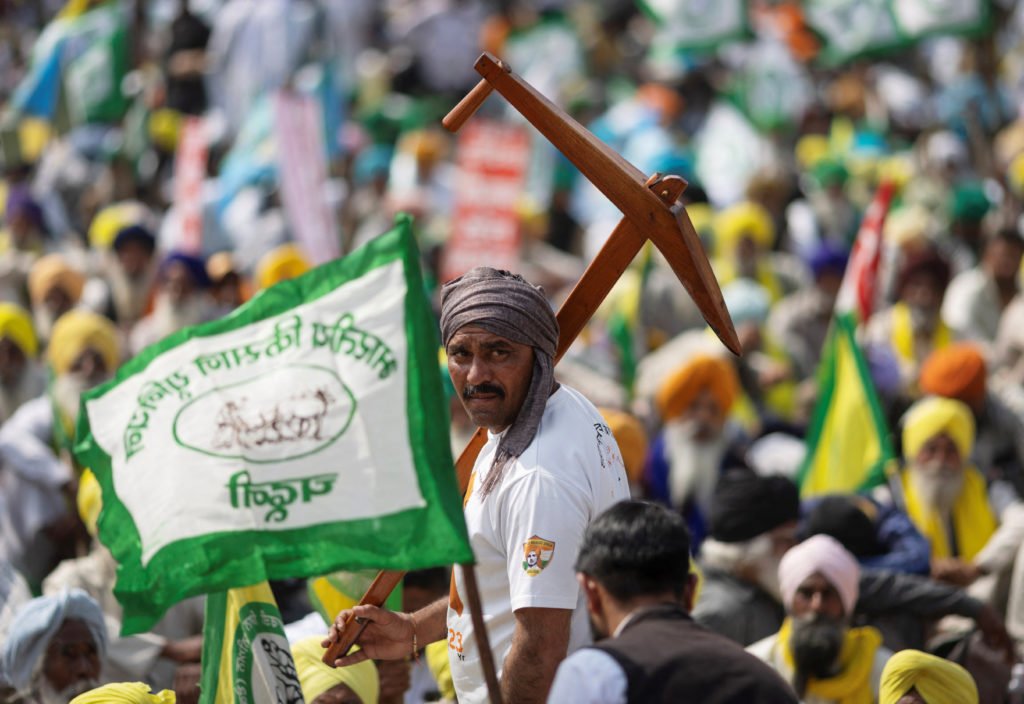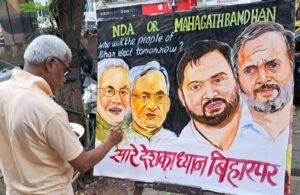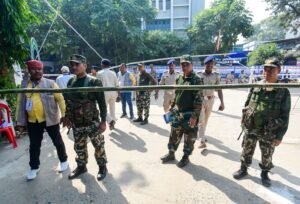Can farmfolk in Haryana tilt the scales this election ?

A farmer holds a mock plough as he attends a Maha Panchayat or grand village council meeting as part of a farmers' protest to press for the better crop prices promised to them in 2021, New Delhi, India, March 14, 2024. REUTERS/Adnan Abidi
Jind: The farmer protests are expected to have a notable influence on the Haryana elections. The year-long agitation against the now-repealed farm laws left a significant impact on Haryana, as many farmers from the state were at the forefront of the protests. Here’s how these protests are shaping the political landscape:
1. Rural Mobilization
The farmer protests created a strong sense of unity among the agrarian community. In Haryana, where farming is a major livelihood, the protests have empowered farmer unions and leaders, such as the Bharatiya Kisan Union (BKU). They are now politically active and can mobilize a large section of rural voters. Candidates and parties that align with the demands of these unions, such as better MSP guarantees and farm-friendly policies, may benefit.
2. Anti-Incumbency
The protests amplified the discontent among farmers towards the ruling government, which was seen as not responsive enough to their demands during the protests. Although the farm laws were repealed, the manner in which the government handled the protests has left lingering dissatisfaction, which could lead to an anti-incumbency sentiment in rural Haryana. Opposition parties are using this to their advantage by promising more farmer-centric policies.
3. Shift in Voting Patterns
In past elections, voters in Haryana have supported parties like the Bharatiya Janata Party (BJP) in rural areas. However, after the protests, many farmers may reconsider their support for the ruling BJP, which was perceived as the architect of the farm laws. This could lead to a shift in voting patterns, especially in key farming belts like Jind, Hisar, and Rohtak.
4. Influence of Farmer Leaders
Prominent farmer leaders like Rakesh Tikait and Gurnam Singh Chaduni have gained considerable influence and are actively campaigning or endorsing candidates. Chaduni even formed his own political party, aiming to contest elections and represent farmers’ interests directly. Their role in mobilizing voters and endorsing specific candidates will likely impact the election outcome, especially in rural constituencies.
5. Election Promises and Manifestos
The farmer protests have forced political parties to place agricultural issues at the center of their election manifestos. The Congress, the Indian National Lok Dal (INLD), and other regional parties have made promises such as MSP guarantees, loan waivers, and better irrigation facilities to attract the farmer vote. How these promises are perceived could heavily influence the farmer community’s voting decisions.

6. Caste Dynamics and Farmers’ Vote
Haryana’s caste politics, particularly the influence of the Jat community (which is largely engaged in farming), intersects with the farmer protests. Many Jat farmers were involved in the protests, and this may influence the way Jats vote, especially if farmer issues and Jat identity overlap. Caste alliances combined with farmer concerns could shift political allegiances.
The farmer protests are likely to be a deciding factor in the Haryana elections, particularly in rural constituencies. The ability of political parties to effectively address farmer grievances and offer credible solutions will significantly impact the election results. The protests have left a lasting legacy, making agriculture a central issue that no party can afford to ignore.
The farmer community is playing a significant role in influencing the Haryana elections, especially after the large-scale protests against the farm laws. In Haryana, where a substantial portion of the population depends on agriculture, farmer issues are at the forefront of political discourse. Here are some key ways the farmer community is shaping the election results:
- Political Mobilization: Farmer unions have grown stronger in recent years, with leaders becoming more vocal and organized. They can mobilize rural voters, which forms a large constituency in Haryana. Farmer leaders are endorsing or opposing specific parties based on their stance on agricultural reforms.
- Impact of Farm Laws: Though the contentious farm laws were repealed, the aftereffects of the protests linger, particularly in terms of trust in the government. Many in the farming community still demand stronger assurances on MSP and other reforms, and parties that address these concerns are likely to gain support.
- Electoral Promises: Political parties are focusing heavily on pro-farmer promises, from better crop prices to subsidies. The way these promises are received will determine how much influence the farmer community holds over the election results.
- Regional Influence: In regions like Jind, Hisar, and Rohtak, where agriculture is the primary occupation, the voting patterns may lean heavily towards candidates who are perceived to have the farmers’ interests at heart.
- Rural Distress: With issues like inflation, rising input costs, and fluctuating crop prices, rural distress is a major electoral issue. Parties that offer tangible solutions could see increased support from the agrarian community.
The farmer community’s influence is pivotal, especially in shaping the rural vote, which is crucial for any party aiming to win in Haryana.








